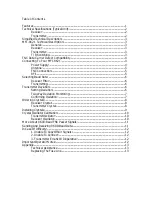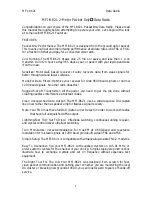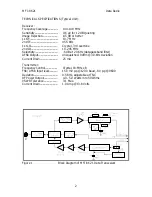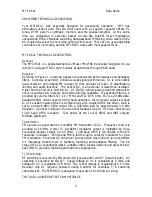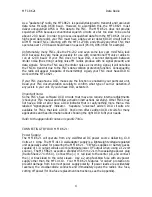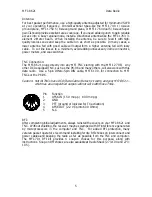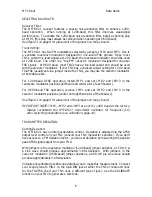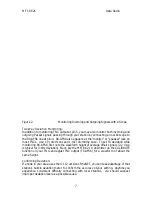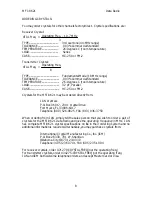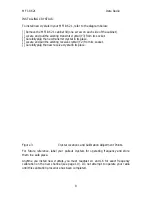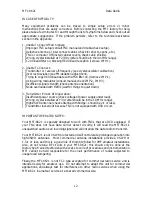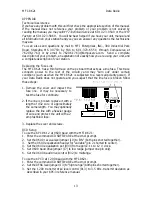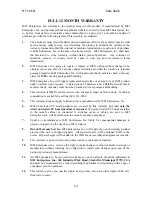
MFJ-8621 Data Radio
6
SELECTING BAUD RATE:
Receiver Filter:
The MFJ-8621 receiver features a special noise-reduction filter to enhance 1200-
baud operation. When running at 1200-baud, this filter improves weak-signal
performance. To activate the 1200-baud noise-reduction filter, install a shorting plug
at JMP-1 (this plug must always be removed when operating at 9600-baud).
See Figure 3 on page 9 for placement of the jumpers on the pc board.
Transmitting:
The MFJ-8621 has two FM modulators selected by jumpers, JMP2 and JMP3. One is
a sensitive
reactance modulator
designed for
mic-level
AFSK signals. Since most
TNC's output mic-level signals at 1200 baud, the reactance modulator should be used
at 1200 baud. The other is a "true-FM"
varactor modulator
designed for
line-level
FSK signals. At 9600 baud, most TNC's have a line-level output and should be used
with the varactor modulator. If your TNC has a line-level output setting for 1200 baud
TX-AFSK (usually set via a jumper inside the TNC), you may use the varactor modulator
at both data rates.
For 1200-baud AFSK operation,
install JMP1 and set JMP-2 and JMP-3 in the
reactance modulator positions (left-hand and center pins of each header).
For 9600-baud FSK operation,
remove JMP1 and set JMP-2 and JMP-3 in the
varactor modulator positions (center and right-hand pins of the headers).
See Figure 3 on page 9 for placement of the jumpers on the pc board.
IMPORTANT NOTE: JMP1, JMP2 and JMP3 are set for 1200 baud at the factory.
Always recalibrate the MFJ-8621 transmitter oscillator for frequency (L6)
after switching modulators (see calibration, page 10).
TRANSMITTER DEVIATION:
Setting Deviation:
The MFJ-8621 has no internal deviation control. Deviation is adjusted via the AFSK
output level control on your TNC (consult your TNC manual for specifics). If you don't
have access to a FM deviation meter, you can set deviation by measuring the peak-to-
peak AFSK signal output from your TNC:
With jumpers in the
reactance modulator
(1200-baud) jumper positions, a
150-mV
p-
p sine wave should produce approximately 3-KHz deviation. With jumpers in the
varactor modulator
(9600-baud) jumper positions, a
800-mV
p-p sine wave should
produce approximately 3-KHz deviation.
Virtually any calibrated oscilloscope will allow you to make this measurement. Connect
your scope probe to PIN-1 on the 5-pin DIN jack at either the TNC or radio end (look
for the TX-AFSK line if your TNC uses a different type of jack). Use the CALIBRATE
function on your TNC to generate a test-tone.

